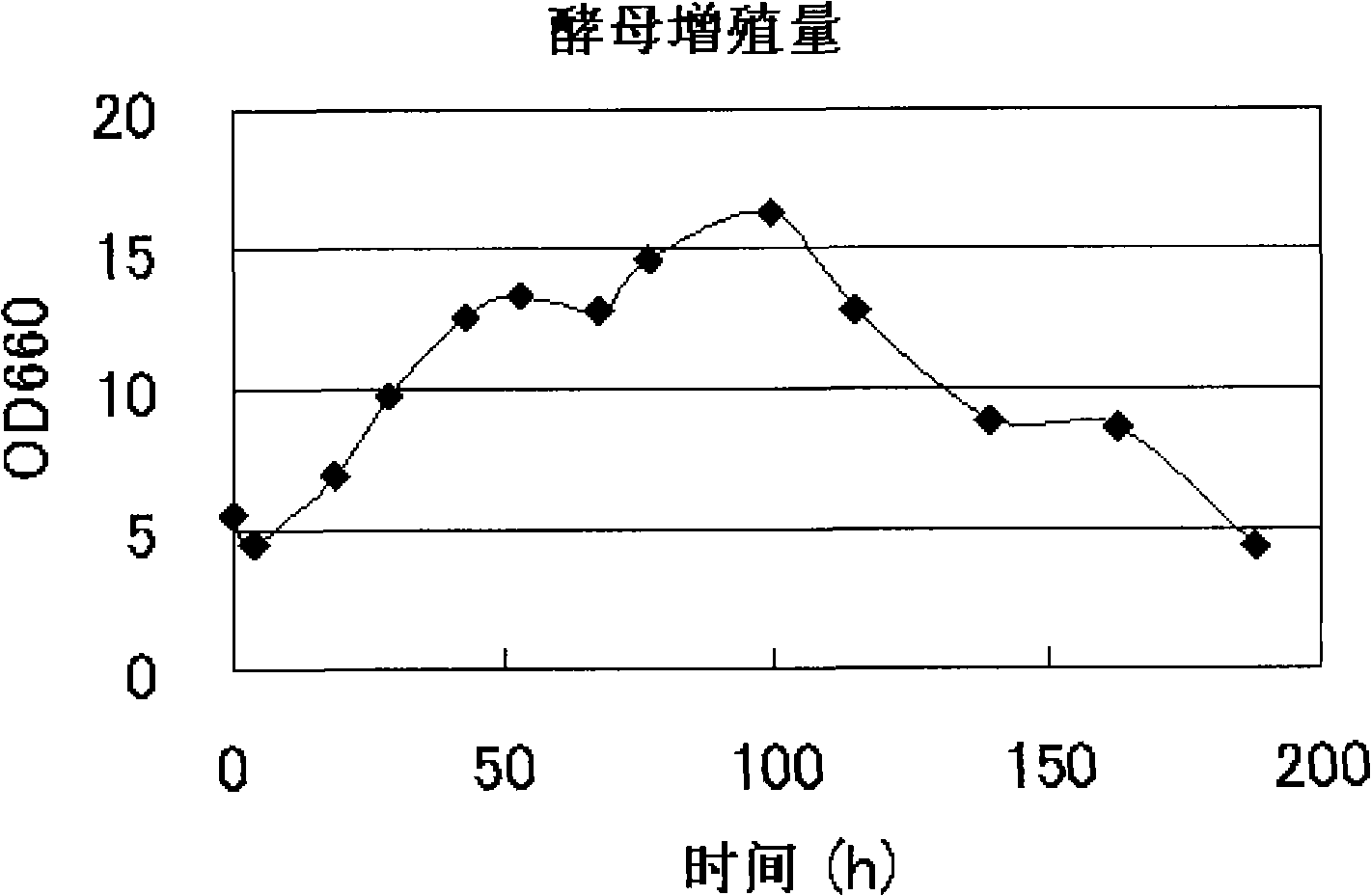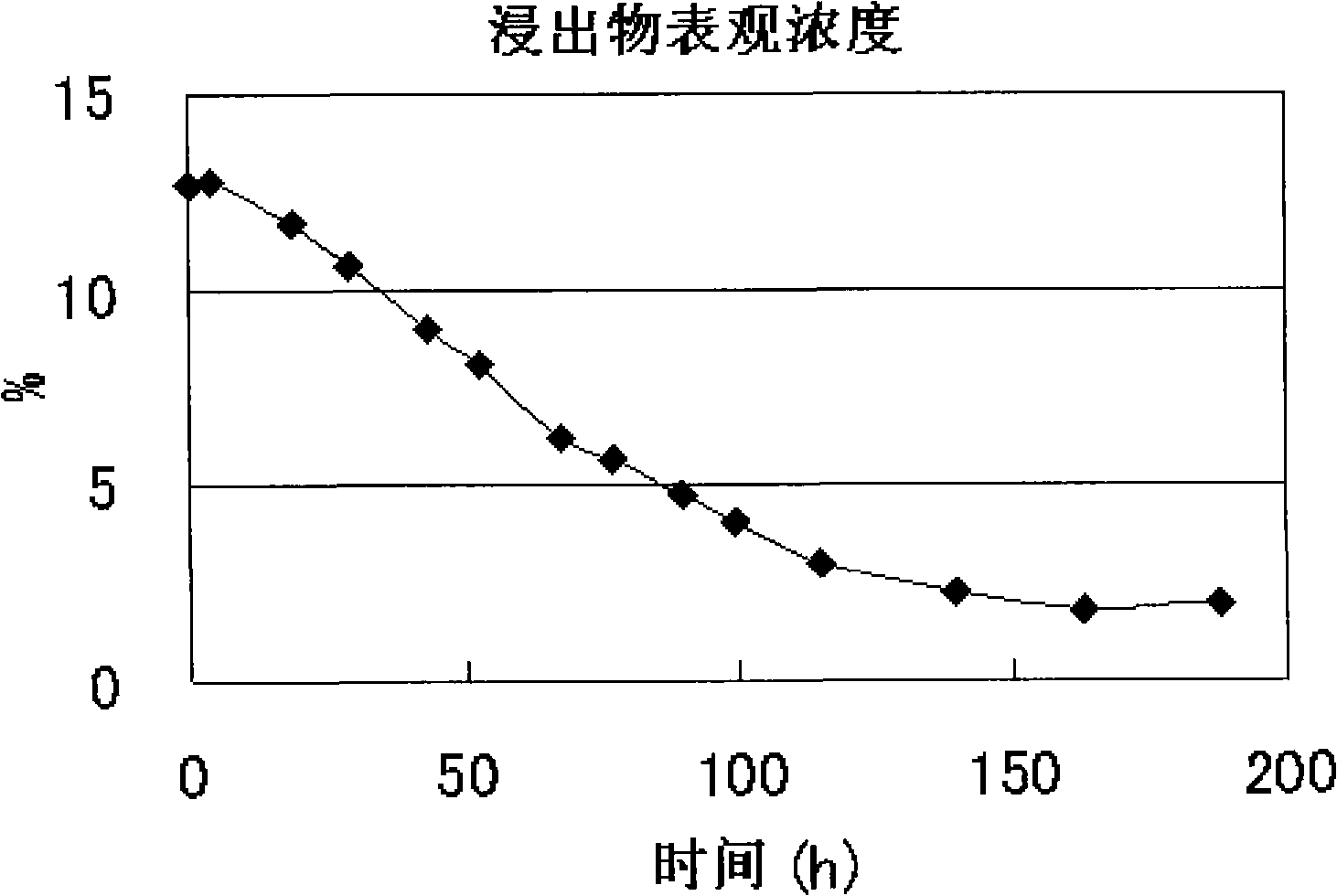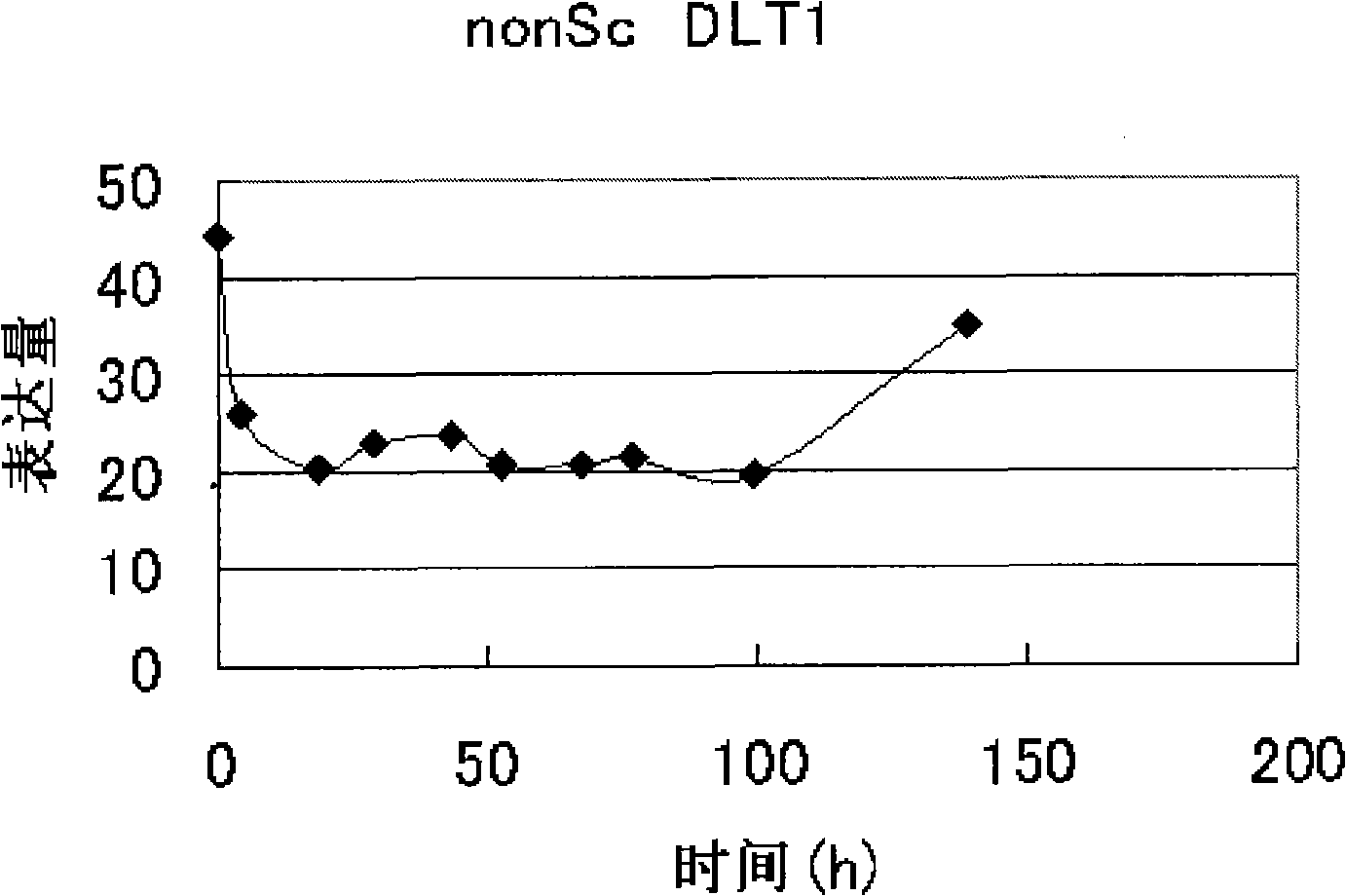Gene capable of enhancing low temperature fermentation ability and/or freezing stress resistance and use thereof
A technology of low-temperature performance and genetics, applied in beer fermentation methods, methods of using fungi, and beer brewing, etc., can solve problems such as unclear genes, and achieve the effects of improving low-temperature fermentability, good freezing resistance, and shortening fermentation time
- Summary
- Abstract
- Description
- Claims
- Application Information
AI Technical Summary
Problems solved by technology
Method used
Image
Examples
Embodiment 1
[0092] Example 1: Cloning of a novel gene (nonScDLT1) that enhances low-temperature fermentability
[0093] As a result of searching the comparison database described in JP 2004-283169, a novel gene nonScDLT1 (sequence number 1) unique to brewer's yeast that enhances low-temperature fermentability was found. According to the obtained base sequence information, the primers nonScDLT1_F (SEQ ID NO: 3) / nonScDLT1_R (SEQ ID NO: 4) used to amplify the full-length gene were respectively designed, and PCR was performed using the chromosomal DNA of the genome reading strain Saccharomyces pastorianus Weihenstephan34 / 70 as a template , to obtain a DNA fragment including the full-length gene of nonScDLT1.
[0094] The nonScDLT1 gene fragment obtained above was inserted into pCR2.1-TOPO vector (manufactured by Invitrogen) by TA cloning. The base sequence of the nonScDLT1 gene was analyzed and determined by the Sanger method (F. Sanger, Science, 214, 1215, 1981).
Embodiment 2
[0095] Example 2: Analysis of nonScDLT1 gene expression in beer trial brewing
[0096] The brewer's yeast Saccharomyces pastorianus W34 / 70 strain was used for beer trial brewing, and the mRNA extracted from the brewer's yeast cell during fermentation was detected by the brewer's yeast DNA microarray.
[0097] Wort extract concentration 12.69%
[0098] Wort volume 70L
[0099] Dissolved oxygen concentration in wort 8.6ppm
[0100] Fermentation temperature 15°C
[0101] The amount of yeast added 12.8×10 6 cells / mL
[0102] The fermentation broth was sampled over time to observe the yeast proliferation ( figure 1 ), the apparent concentration of the extract ( figure 2 ) changes over time. Simultaneously, the yeast cells were sampled, the prepared mRNA was labeled with biotin, and hybridized with the brewer's yeast DNA microarray described in Japanese Patent Laid-Open No. 2004-283169. Carry out signal detection with GeneChip Operating System (GCOS; GeneChip Operating Soft...
Embodiment 3
[0103] Example 3 Preparation of nonScDLT1 high-expression strain
[0104] The nonScDLT1 / pCR2.1-TOPO described in Example 1 was digested with restriction enzymes SacI and NotI to prepare a DNA fragment including the full-length protein coding region. This fragment was ligated to pYCGPYNot treated with restriction enzymes SacI and NotI to construct nonScDLT1 high expression vector nonScDLT1 / pYCGPYNot. pYCGPYNot is a YCp-type yeast expression vector, and the introduced gene is highly expressed under the control of the promoter of pyruvate kinase gene PYK1. A selectable marker for yeast containing the geneticin resistance gene G418 r , in addition, the selectable marker for E. coli contains the ampicillin resistance gene Amp r .
[0105] Using the high expression vector made by the above method, adopt the method described in Japanese Patent Laid-Open 07-303475 to transform the AJL4004 strain, use the YPD plate medium (1% yeast extract, 2% polypeptone, 2% polypeptone) containing...
PUM
 Login to View More
Login to View More Abstract
Description
Claims
Application Information
 Login to View More
Login to View More - R&D
- Intellectual Property
- Life Sciences
- Materials
- Tech Scout
- Unparalleled Data Quality
- Higher Quality Content
- 60% Fewer Hallucinations
Browse by: Latest US Patents, China's latest patents, Technical Efficacy Thesaurus, Application Domain, Technology Topic, Popular Technical Reports.
© 2025 PatSnap. All rights reserved.Legal|Privacy policy|Modern Slavery Act Transparency Statement|Sitemap|About US| Contact US: help@patsnap.com



